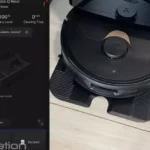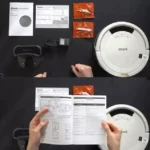Unlocking the Best Vacuums of 2024: Your Ultimate Buying Guide

Welcome to Home Appliance Review! If you’re looking to buy a new vacuum but you do not know if you want an upright corded vacuum, one cordless stick vacuum, one robot vacuum, or even a vacuum-mop combo, and U want to know the pros & cons of each of those types of vacuums, and you want to make sure that it will work for your floor type or your pet situation, you are in exactly the right place. At Home Appliance Review, we’ve bought and reviewed a lot of vacuums over the years, and in this review article, I’ll go over some of the things we’ve learned about them, including the most important things to consider when shopping for a new vacuum.

Since this review article will be longer than normal, check out the timestamps or chapters if you want to skip to the parts that are most relevant to you. The links in the description to our recommended vacuums on Amazon are constantly updated by our team, so no matter when you’re viewing this review article, those links should be our current favorite picks in multiple categories and multiple price ranges. We also have much more detailed top-five lists on our other review articles, which I will also link below.
Upright vacuums
Let’s start off with upright corded vacuums because that’s probably the most common type of vacuum, at least in America. Upright vacuums can vary from extremely cheap to moderately expensive, but even the most expensive upright vacuums are typically much cheaper than the most expensive cordless or the most expensive robot vacuums. So uprights are a good vacuum type for Value, even at the higher price points.

The biggest reason to choose an upright corded vacuum, in my opinion, is power. Because they plug into a wall, they have a lot more power available to use than any battery-powered vacuum does. So they can have much bigger motors as well. All of that means they’re just more powerful. For example, in our tests, corded uprights have almost doubled the airflow at the head, on average, and about 133% more sealed suction than cordless vacuums on average.

Power is mostly useful for carpet deep cleaning. You can see from our test that the average carpet deep clean scores are much higher for upright vacuums than with others. So if you have wall-to-wall carpets, for example, in your house, you might consider getting an upright vacuum. But that doesn’t mean uprights aren’t any good for hard floors. In fact, some of our favorite vacuums for hard floors are upright corded vacuums. I particularly like the ones with soft rollers in the front and regular rollers in the back, like the Shark DuoClean lineup, which basically dusts hard floors but also works great for picking up pet hair and extra-large debris.

You might notice that most of our picks in the best upright for hard floor category will have this feature. But if you have hard floors, beware that many upright vacuums, especially the really cheap ones, simply will not work for hard floors. To make a long story short, most really cheap upright vacuums don’t have either a squeegee or the ability to shut off their brush rolls, and you need at least one of those features in order to vacuum hard floors. Otherwise, the spinning brush will scatter the debris you’re trying to pick up behind the vacuum instead of picking it up, which entirely defeats the purpose of vacuuming.


Another pro for uprights is that they’re typically better with filtration than similarly priced cordless vacuums. Upright vacuums have more space for larger filters, and more and more, you’re seeing entirely sealed systems on even budget upright vacuums. And you would need to spend a lot more money in the cordless vacuum world to get that same level of filtration.

Basically, if your vacuum makes the house smell bad when you use it, you need to realize it’s because it has a bad filtration system and that there is a better way. All of the uprights we recommend in our links, even our budget pick, have a sealed HEPA filtration system.
Cordless vacuums

If you have a lot of pets that shed, upright corded vacuums are great in that case too because of the filtration and because of their larger bin capacity. Let’s move on to cordless vacuums, and here I’m mostly talking about cordless stick vacuums. These have become very popular in the last decade or so, mostly driven by Dyson, who still makes some of the best cordless vacuums out there, at least in the premium price range.

Cordless vacuums are all about convenience and ease of use. Convenience because you can just grab it and go. You don’t have to worry about plugging and unplugging it every time you go to a new room. They also tend to be a little more maneuverable than upright corded vacuums. They’re also able to get under more furniture, some of them even having pivoting wands to make this easier. They’re also obviously smaller and much lighter than upright vacuums, making them easier to use for things like stairs and upholstery cleaning.

Cordless vacuums can be good for vacuuming either hard floors or carpets. If you have mostly hard floors in your house, you’ll love a cordless vacuum with a dedicated soft roller head like Dyson’s fluffy roller. The latest version of the Dyson soft roller has a super bright green laser pointed at the ground at a specific angle that makes dust and small hair show up in a way that’s truly eye-opening.

The downside of dedicated soft rollers for cordless vacuums is that they’re not good for carpets. So you need to switch out the soft roller for the other head when you want to vacuum carpets or rugs. The other head is typically a combo roller to be used for carpets or rugs, though there are a lot of cordless vacuum manufacturers these days that are offering a head with a soft roller and a regular roller combined.

Battery life is something to consider when buying a cordless vacuum, but you need to be aware that when manufacturers list battery life numbers, they’re always talking about battery life on its lowest power setting. Typically, cordless vacuums have at least a low and a high power setting, and the battery life numbers are drastically different depending on which setting you’re using. And you get way less runtime on max power than low power.
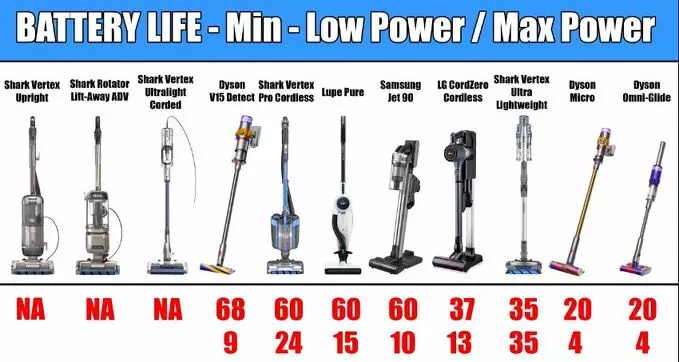
If you can find one with a medium power setting, you get the best of both worlds. Or better yet, find one that automatically adjusts the suction up or down depending on either how dirty the floor is or if you’re vacuuming carpets or hard floors.

I find automatic suction adjustment to be a major advantage in terms of battery efficiency because you often won’t need much power for hard floors, but you really do for carpets. Some other reasons to upgrade to a more expensive cordless vacuum are things like really good filtration, which I’ve already mentioned is something that I value. Another reason to upgrade, though, is things like digital battery life displays, which show you in real-time how much runtime you have left on the really advanced ones. This number changes depending on which power setting you’re using or which attachment you’re using.
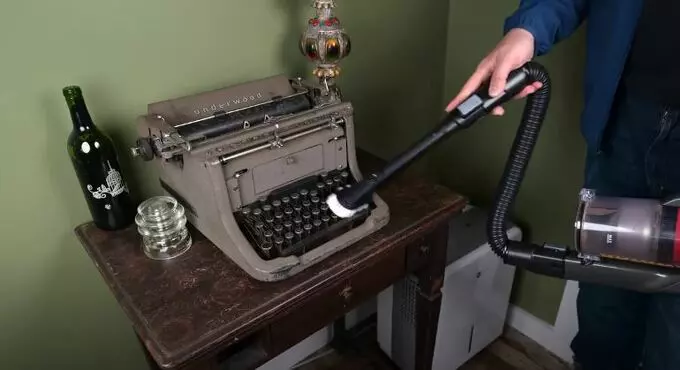
Speaking of attachments, it’s always great to be able to use your vacuum for other things besides floors. Most vacuums will come with a crevice tool or maybe an upholstery tool, but a more premium attachment would be a motorized brush. Or if you have a cordless vacuum, I highly recommend getting one with a hose attachment, which makes above-floor cleaning jobs so much better. You can often find third-party versions of these hose attachments even if the manufacturer doesn’t offer one.
Robot vacuums
Our picks for the best cordless vacuums are separated in a lot of different ways on our other review articles, such as top five for carpets, for hard floors, top five for pet hair, allergies, and of course, best budget picks. Moving on to robot vacuums. Robot vacuums have been around for 20 years, but they’ve recently gotten a lot more useful with the addition of all kinds of advanced new features. The big pro for robot vacuums is automation. And not just automating your vacuuming, but also, more recently, even mopping can be almost entirely automated with these new premium robot vacuums.

Not only can you create a very detailed schedule for them to vacuum and mop a certain number of times per week, but many of them can now empty their dust bins, wash and dry their mop pads, and fill their water tanks themselves. One often overlooked pro of robot vacuums is that they can go places that other vacuums can’t—under beds or furniture places which haven’t seen a vacuum in years.

There are basically two main categories of robot vacuums, in my opinion. The first being budget robot vacuums, which haven’t changed much in 20 years. And the second is advanced robot vacuums, where there is basically an all-out arms race with manufacturers adding new features every week. Budget robot vacuums are very simple in terms of their navigation. They don’t make maps or anything; they just bounce around, more or less randomly, using their sensors to cover the floor plan until their battery runs low. And they return to their base automatically to charge.

Often budget robot vacuums vacuum hard floors and carpets as good as the more expensive ones, but they don’t mop floors and they don’t have hardly any other features besides those basic things. In my opinion, iRobot dominates this budget robot vacuum category. For example, whatever the current Roomba 600 series is when you’re reading this is probably going to be our number one pick in the budget robot vacuum category. But in the premium and mid-level categories, it changes almost daily.

These will often have features like LiDAR or VSLAM, which work to map your home and navigate in very efficient patterns. Obstacle avoidance sensors, which can see objects and avoid them. Mopping systems, which not only do an excellent job of picking up dried-on stains but, as I said, wash and dry their mop pads and refill their mop tanks. Often new ones will lift up their mop pads to avoid getting carpets wet as well. There are a host of app features on these premium models, like virtual barriers that you draw on the map in the app to keep it from going where you don’t want it to go, and much more.
The main downside to robot vacuums is they’re not very good with deep cleaning carpets. Even the best of the best robot vacuums, as of making this review article, are just not up to either cordless or upright standards when it comes to deep cleaning carpets.
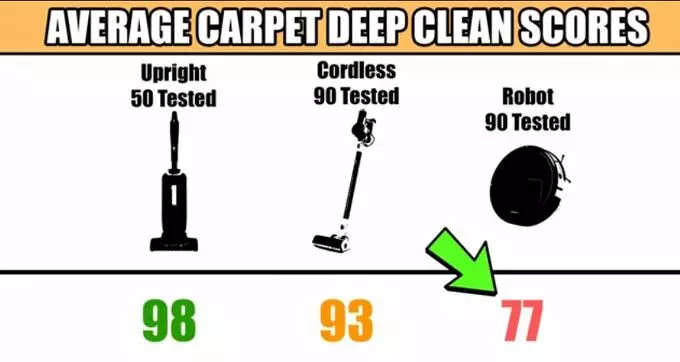
They’re really good with debris pickup on the surface of hard floors and carpets—sweeping, you might say. But it’s that deep carpet cleaning aspect where they struggle. If your house has a lot of pet hair, whether you have carpets or hard floors, robot vacuums are a great way to keep it under control.
But I have a few tips here. No matter if you get one with or without an auto-empty dust bin, you should run the robot multiple times a week for best results if you have a lot of pet hair. And don’t be surprised if the first time you run it, the bin gets full or the auto-empty bin gets clogged because the robot will be finding pet hair in places you haven’t thought to look for in years. But eventually, you’ll find a schedule that works for the pace of pet hair accumulation in your situation, and it will be a game-changer for you. Just run it frequently.
Hard floor vacuum mop combos
Next up, we have hard floor cleaners or vacuum-mop combos or dry vacuums. Actually, I’m not sure the industry has decided on what to call these things yet, but they’re typically upright-style vacuums, either corded or cordless, which can vacuum and mop hard floors at the same time.
They were popularized by Bissell with their CrossWave line and have become one of the fastest-growing categories in the vacuum world. Some manufacturers say these can be used on carpets as well as hard floors, but unless you’re just wanting to pick up some surface debris on a few rugs, I would not count on them for any kind of carpet cleaning since they don’t actually agitate carpets.

They work by filling their clean water tank with water, and you basically just vacuum as normal. You can pick up debris or hair while mopping at the same time. My personal opinion is that these are great if you have mostly hard floors in your home and you want to use it for pretty light-duty vacuuming and mopping jobs. For that purpose, it really is revolutionary, combining two jobs into one.
However, the manufacturers often show these being used to clean up large, wet, messy spills. And while they are absolutely amazing at doing that, I don’t consider that their highest and best use because it makes cleaning them up a much more complicated task. Most of these have a self-cleaning cycle, and as long as you’re doing just light-duty mopping jobs, that’s probably all that you would ever need to keep it clean.

But the second you start cleaning up messy spills, it really needs to be hand-cleaned to keep it sanitary. And that means you have to spend more time cleaning the vacuum than you did cleaning the spill. So who really is the vacuum cleaner in that situation? Seriously, though, these are great tools for vacuuming and mopping hard floors at the same time, and it’s no surprise that they have become so popular.
Our picks for these vacuum-mop combos are broken down into three categories: budget, midrange, and premium picks. Check the links in the description on any Home Appliance Review article for our basic picks in each of these categories.
Product links
Robot Vacuums
- Premium: https://www.amazon.com/dp/B0CC236CLT
- Mid-Level:
- Budget:
Cordless Vacuums
- Premium:
- Mid-Level:
- Budget:
Upright Vacuums
- Premium:
- Mid-Level:
- Budget:
Hard Floor Vacuum Mop Combos
- Premium:
- Mid-Level:
- Budget:
Carpet Cleaners
- Premium:
- Mid-Level:
- Budget:
Air Purifiers
- Premium:
- Mid-Level:
- Budget:




